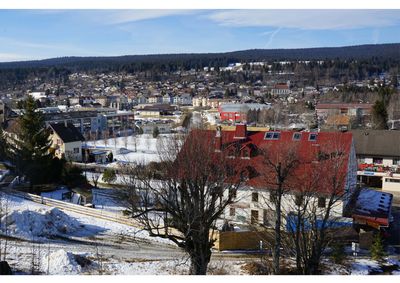Commune Le Chenit: Watchmaking Vallée De JouxDaniel Rea Kragskov, Bess Laaring, and Tulsi Vadalia
On the high planes of the Jura, the ribbon development of Le Chenit spreads between the shores of Lac de Joux and the forest, framing a shallow valley. Deriving from a logging town in medieval times, this commune today boasts one Switzerland’s largest communal land reserves, with one-third of the total surface area being owned by the municipality. These 3340 ha are comprised of forest, open pastures and extensive shrublands. The rights to the land are regularly redistributed and shared among the local dairy farming and timber cooperatives. Le Chenit maintains this strong tradition of commoning in agriculture up until this day.
Due to the harsh climate the relative scarcity of arable land in the valley, farmers had to sustain themselves with multiple occupations. Originally a way of generating additional income, the craft of metalworking came to replace forestry and agriculture as the main economy in the valley. Constantly reinventing itself in times of recession, this craft developed from the manufacturing of simple metalwork and cutlery to an ever-refined expertise in clock and watchmaking. The Valle de Joux today is famous for the most established brands in luxury timepieces and has built a reputation reaching far beyond Swiss borders (such as Jaeger-LeCoultre, Audemars Piguet, Patek Philippe etc.). Today the industry of fine mechanics attracts most of its workforce from the French parts of the Jura valleys across the border and from the Swiss cities of Yverdon and Lausanne, which lie within a 30min train ride.
